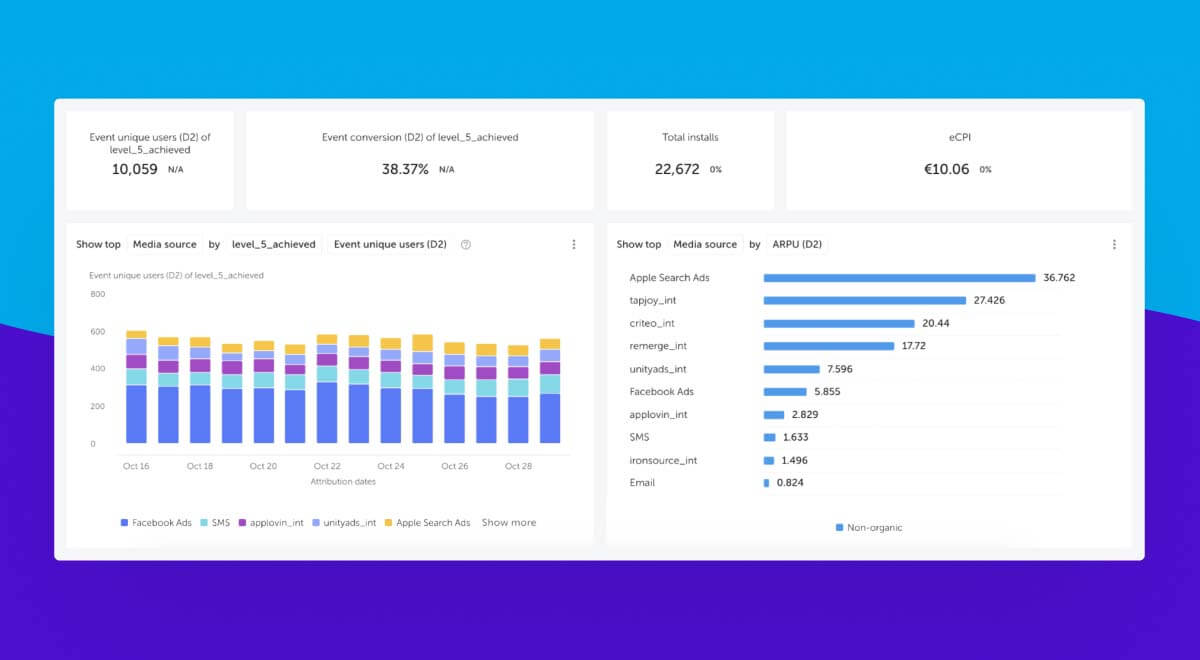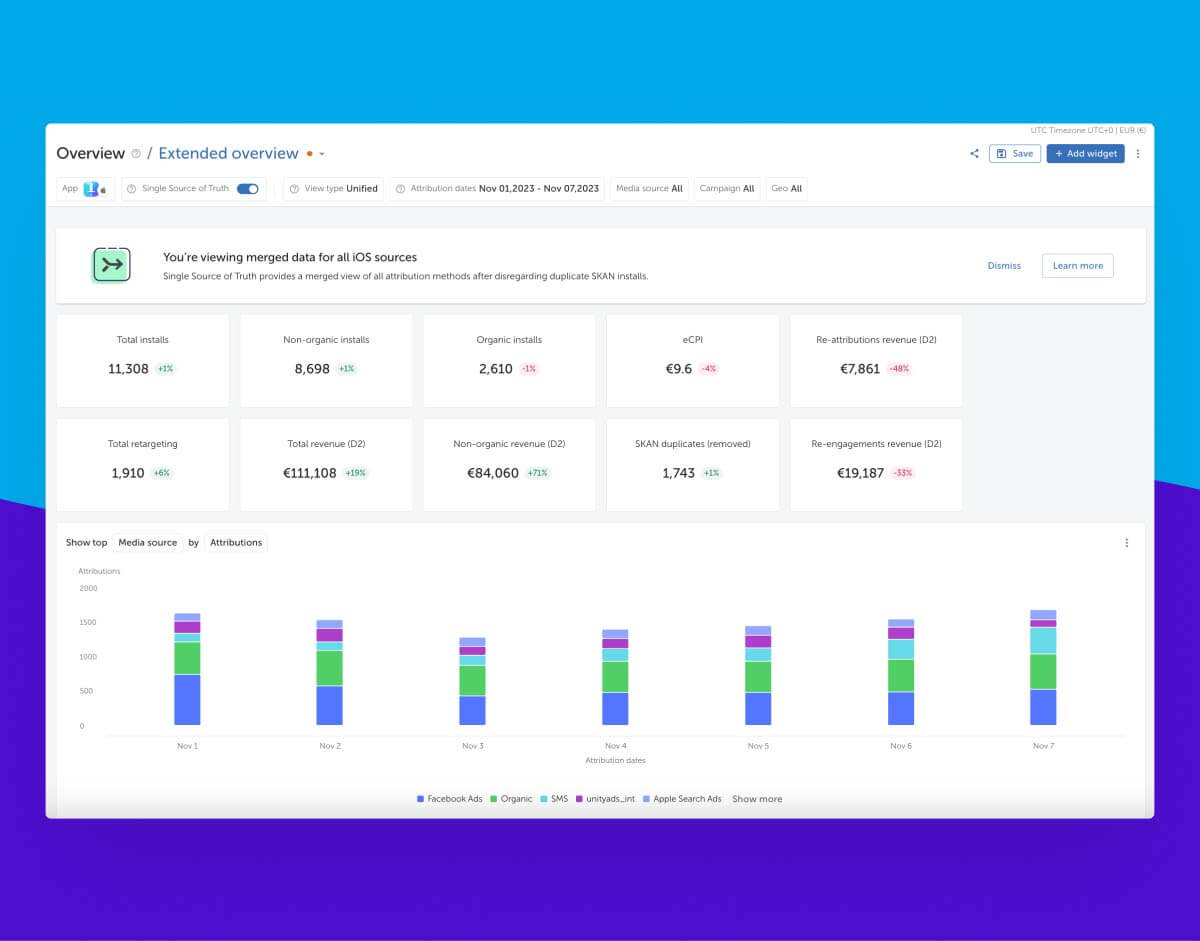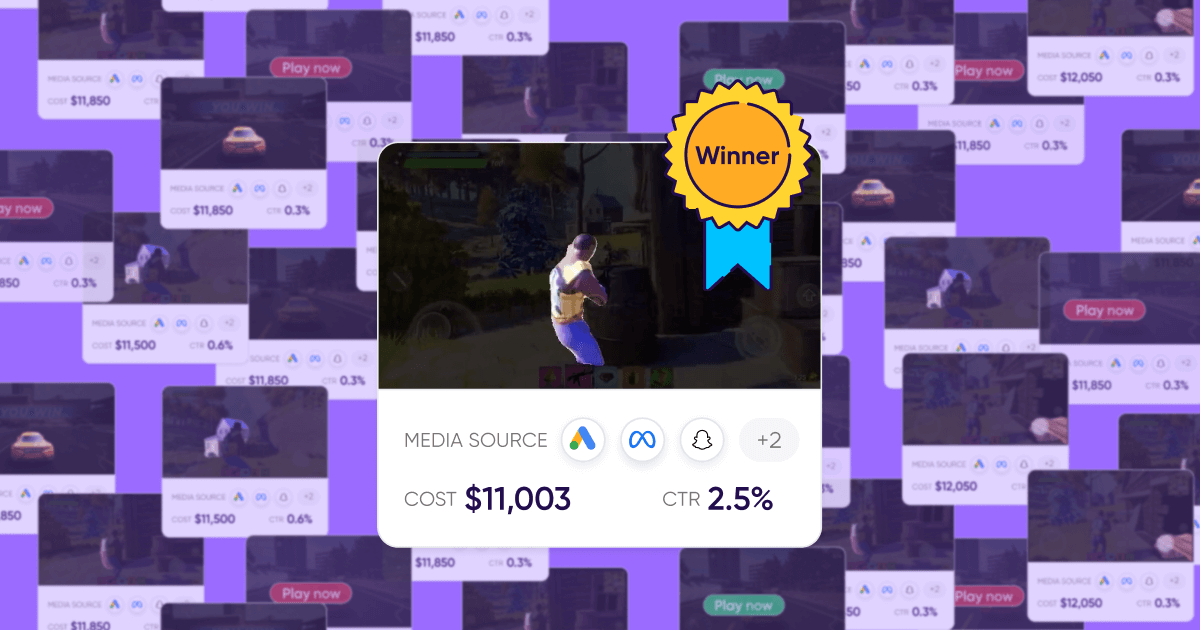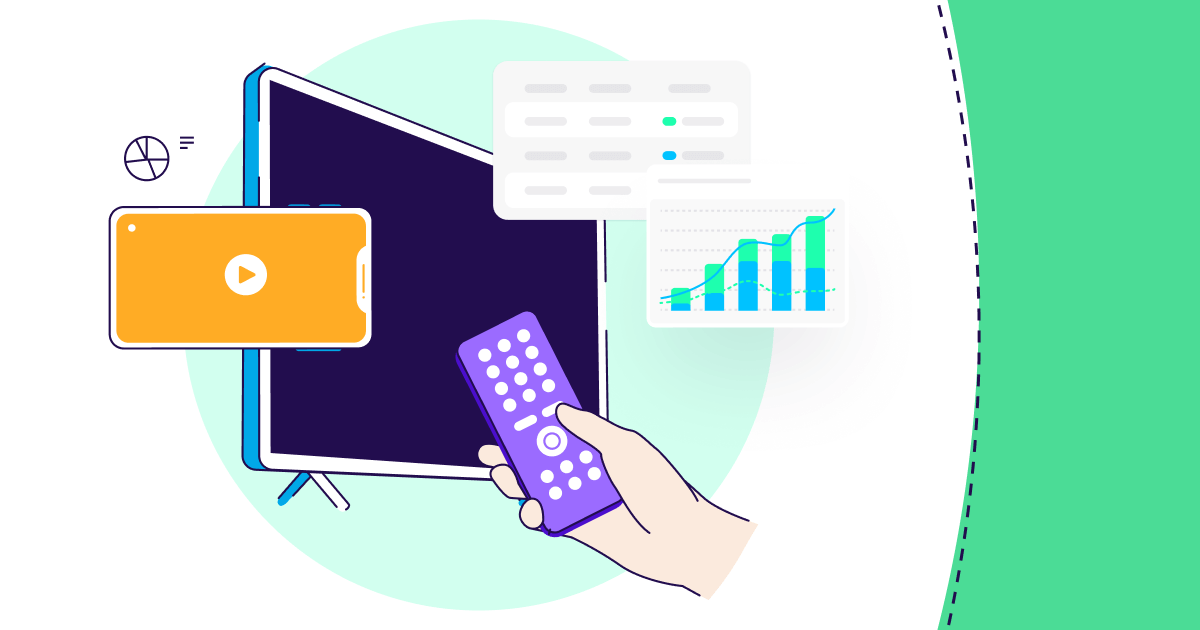
SSOT: A one-stop shop for bridging iOS data gaps
On September 16, 2020, marketers had a watershed moment.
iOS 14 triggered a massive shift in the industry: from focusing on individual perspectives in data to adopting an aggregate approach. As part of this transition, we had to familiarize ourselves with SKAdNetwork (SKAN) to analyze the performance of our iOS campaigns.
It was no easy task to say the least, but eventually, we grasped the nuances of SKAN. We developed sensible conversion value strategies and gained a better understanding of user lifetime value (LTV) and campaign granularity.
SKAN continued to evolve and unlike its previous versions, SKAN 4.0 now offers an extended measurement window of up to 35 days, as well as improved granularity in campaign dimension reporting and added support for web-to-app attribution.
But while SKAN 4.0 represents a positive step forward, it still grapples with the following issues:
- Incompleteness: SKAN does not report data for organic, Apple Search Ads, and owned media sources.
- Granularity: SKAN employs a limited range of only 6 bits (equivalent to 64 options) for measuring various events, which can impact revenue measurement accuracy. While SKAN 4.0 extends the LTV window, it still lacks granularity, especially for the 2nd and 3rd postbacks, which return coarse values.
- Narrow scope: SKAN lacks the ability to measure re-engagements.
- Lack of differentiation: SKAN doesn’t differentiate between re-installs and re-attributions, making it challenging to assess the return on remarketing spend.
- Delayed conversion reporting: SKAN data is received only 24-144 hours after the fact, limiting the ability to perform campaign optimization quickly (a ”move fast and break things” methodology is impossible).
Enter a Single Source of Truth
Addressing the challenges mentioned above, Single Source of Truth (SSOT), launched in May 2022, is a first-of-its-kind solution that allows advertisers to consolidate data from various sources, tackling duplicate installs and delivering valuable insights.
SSOT is able to provide a full-fledged measurement for both non-organic and organic activity and a unified dashboard that houses all your traffic sources: organic, paid media, owned media, influencers, and more.
By leveraging the strengths of both AppsFlyer and SKAN, SSOT ensures improved accuracy, enhanced remarketing capabilities, and real-time insights. In fact, according to our research, Apps that utilized SSOT experienced a 29% non-organic install attribution uplift. Furthermore, by giving priority to AppsFlyer attribution when SKAN data is insufficient, campaign eCPI can be reduced by 20% to 60% (depending on category), while also increasing revenue attribution to allow marketers the flexibility to increase their budgets.
It’s also worth noting that many marketers run re-engagement campaigns, targeting users who have interacted with an app they’ve already installed. In such a scenario SKAN falls short as it doesn’t account for this revenue, and therefore cannot provide figures on the return on remarketing investment.
SSOT doesn’t just stop at consolidating data; it also excels in providing real-time insights, a key advantage for marketers seeking instant results (who doesn’t?). Unlike SKAN, which only provides insights after a 24-144 hour delay, SSOT ensures that in-app event attributions are visible as they occur. This speedy feedback loop allows marketers to promptly react to campaign changes, new channel opportunities, or expansions into different geographic regions.
With AppsFlyer attribution leading the way in SSOT, marketers are able to immediately monitor conversion rates such as installs to registrations, trial starts, game-level completions, and more. This agility allows them to fine-tune their campaigns without waiting for days to gain insights.
Embracing probabilistic models to fill in the gaps
SSOT isn’t just another product; it’s a new way of approaching attribution and measurement in the post iOS-14 era. Instead of a fragmented view of their data, SSOT allows advertisers to make data-driven decisions with all the pieces in place.

One of the prevalent challenges advertisers face involves the need to make decisions when dealing with incomplete or unavailable data from SKAN.
Take, for instance, the earlier SKAN versions, which offered limited revenue data within a short 24-hour window. Despite the extended 35-day measurement window in SKAN 4.0, it continues to offer an imprecise view of campaign performance due to the use of coarse values. Additionally, there can still be a delay of up to 144 hours in receiving D7 revenue data.
SSOT addresses these challenges by taking a different approach, one that aligns with how you probably measure user LTV. This approach requires a change in mindset, moving from a deterministic method to a probabilistic one that relies on machine learning to offer a high level of accuracy. This shift embodies a practical move toward the future of data analysis, focusing on adaptability and precision.
SSOT’s modeling solutions are designed with this approach in mind. They harness the power of available data from consented users to deliver valuable LTV metrics, including insights into day 7 revenue, GEO breakdowns, and much more.
For example, the D7 revenue model identifies a subset of users who exhibit similar behavior on both AppsFlyer and SKAN down to the campaign level. It then proceeds to analyze consented users’ data after 7 days and calculates the ratio between day 7 and day 1. Then, it applies that same ratio to model SKAN data for day 7 for the equivalent group we identified before.
The day 7 accumulated revenue includes both the revenue reported by AppsFlyer and the modeled revenue from SKAN.
The “end game”
To date, we’ve introduced 5 new features to our Single Source of Truth dashboard, encompassing organic data, day 7 revenue metrics, geo metrics, app currency, and timezone support. Our latest enhancement empowers advertisers to monitor in-app events performance. It offers real-time in-app user performance data, providing marketers with immediate insights into user actions like registrations, trial starts, and purchases. This real-time data, prioritizing AppsFlyer attribution in the absence of sufficient SKAN data,, allows marketers to quickly assess the impact of changes, monitor conversion rates, and avoid costly errors.
As we continue to enhance SSOT, it’s essential to connect these advancements with our broader vision. We continue to support our customers in their quest to fill data blind spots by offering a one-stop, comprehensive, and real-time reporting solution for iOS campaigns, and in the future, for Android as well.



